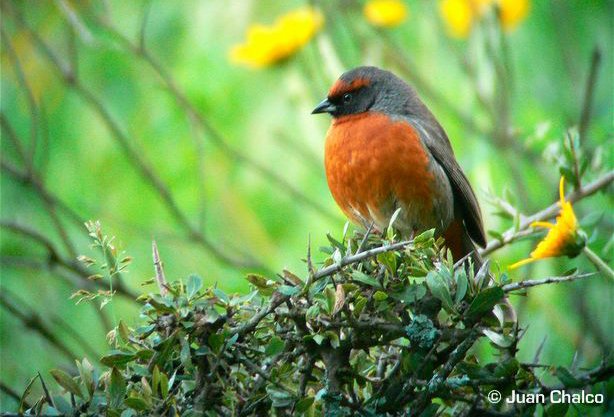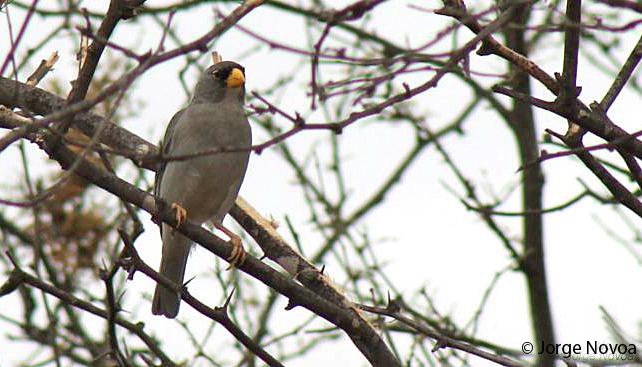
Knowing what to expect in a particular habitat type is important in identifying birds. Being able to describe habitat types accurately is a challenge.
Some habitat types are simple and easy to describe. Others are more complex and words and a single photography may often fall short. In thinking how to accurately describe a habitat type, I ran into an application (app) that might help; the Photosynth panoramic view.
Tropical ecosystems pack a relatively high number of birds at a single locality. Subtle differences in habitat type may result in higher and lower probabilities of finding what you want.
I used this app on my phone and recorded panoramic views on the go. These views can be shared on a central website or as feed on a cell phone.

Rufous-breasted Warbling-Finch
Rusty-breasted Warbling-Finch occurs in scrub habitat in the western Andes of Peru. The panoramic view gives an idea of the elevation and sparse scrub habitat where this rare bird can be found.
–> PLAY PANORAMIC VIEW OF HABITAT (click on the play button)

Cinereous Finch
Cinereous Finch inhabits multiple habitat types in the lowlands of northern Peru and Southwest Ecuador. However, dry sparsely vegetated habitats are a sure thing to find this endemic bird.
–> PLAY PANORAMIC VIEW OF HABITAT (Click on the Play button)
This app’s interface is easy to use in the field, and the views are easy to share. This tool helps to portray habitat types and result in better reports. Shared views may help others find the habitat types where sought after birds are likely to be found.











This is a really good idea.
This is incredibly helpful. All the more so given these habitats do not “look like” typically birdy spots. Thank you.
Yes, Steve, Google has an even better interface, but it is more demanding on the equipment one needs to obtain a panoramic view. Google’s views are impressive though.
Hi Laura, glad you like it. I would agree; this gives a better idea of what the habitat and landmarks look like. I think it is particularly useful if one wants to show, say for instance stops along a road, what bend of the road to look for such and such bird, and more.